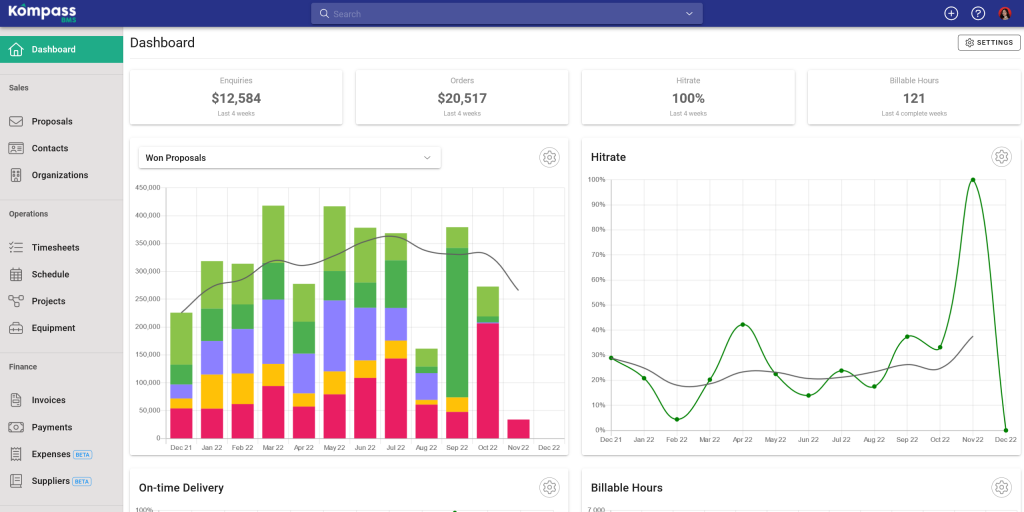Surveying is one of the oldest professions on Earth, but this has been a particularly exciting time to be in the profession. Although it is an industry that has historically accepted and adopted technology earlier and more enthusiastically than some other similarly aged professions, innovation has boomed in recent years with not only new tools, but new ways to make workflows more efficient. That said, one of the areas which is easy to overlook in this space is the business side of things. People in this industry are mostly trained as surveyors, which is no easy task in such a technical field, but that can leave gaps on the business and financial side of the coin. In order to keep a business running, especially for small-to-midsize firms, being able to keep track of the back-end side of the company is crucial.
To this end, there are certainly options available that are not specific to the surveying industry which aim to help small business owners keep their financial and business operations in order, but presenting a couple of issues. One is that they can be disparate. There are tools for specific functions, whether it be scheduling or accounting or any other individual function, but a pile of solutions like this can be cumbersome to track. Further, some of the tools are designed for people with a business background, and while some in the surveying industry certainly have that training, it is far from ubiquitous. Recently, Geo Week News spoke with Kai Duebbert, the CEO and founder of Kompass BMS, a software platform looking to solve this business side of the equation for the surveying industry, about these issues.

The most important point Duebbert makes sure to get across in our conversation is that the Kompass platform was designed by surveyors for surveyors. Duebbert and his team have training and experience in the field, meaning they understand what exactly is needed for this specific industry. Duebbert himself is a second-generation surveyor, having worked for companies and projects all over the world, eventually landing with Murphy Geospatial in 2010. It was there that this solution was originally devised, and the product was brought to market officially two years ago.
In addition to his experience and training in the surveying field, Duebbert also has experience in software development dating back to his childhood, as well as an MBA. All of this combined made him uniquely qualified to delve into this space, and the goal was to make things as simple as possible. It’s an ethos that’s felt throughout walking through the solution, all the way to the pricing model. Rather than being an a la carte model which would not only confusing the pricing model but also potentially overwhelm users deciding what they do and do not need, it’s just a singular plan including everything the software has to offer.

Duebbert also notes that the solution, which targets companies in size ranging from 10 to about 250 employees, includes the option for onboarding training in which the Kompass team runs users through the different functions and important tips to keep operations running as smoothly as possible. Some of the specific features included within the software are a simplified dashboard on the front page for a quick look at the most important KPIs for your company, equipment trackers and assignments to ensure all employees have the tools they need when they need them, customizable proposal templates, among others.
The other important point Duebbert makes about the Kompass platform is the integrations it offers to provide access to other key financial tools. Still a relatively new platform, there are still additional features being added – the most recent additions have been tools to track expenses, with plans for easier ways to forecast financials on the docket for 2023 – but in the meantime it’s important to provide access to tools that can address tasks not yet available in Kompass in order to ensure this remains an all-in-one solution.
That includes third-party applications like QuickBooks and SugarCRM, among others, but perhaps more importantly it includes integration with internal files. Duebbert notes this can be a difficult feature to highlight on a phone call, but customers see the immediate value when in the field, having the ability to quickly pull up things like contracts or control points on a mobile device within the Kompass app.
As a surveying firm builds itself up, it becomes necessary for the business side of the operation to grow, which can be a difficult transition for the surveyor him or herself. For the most part, surveyors want to continue doing their job in the field and the job for which they’re trained and about which they’re passionate. That means finding a software which keeps things simple and understands what surveyors do, and sometimes just as importantly don’t, need.






